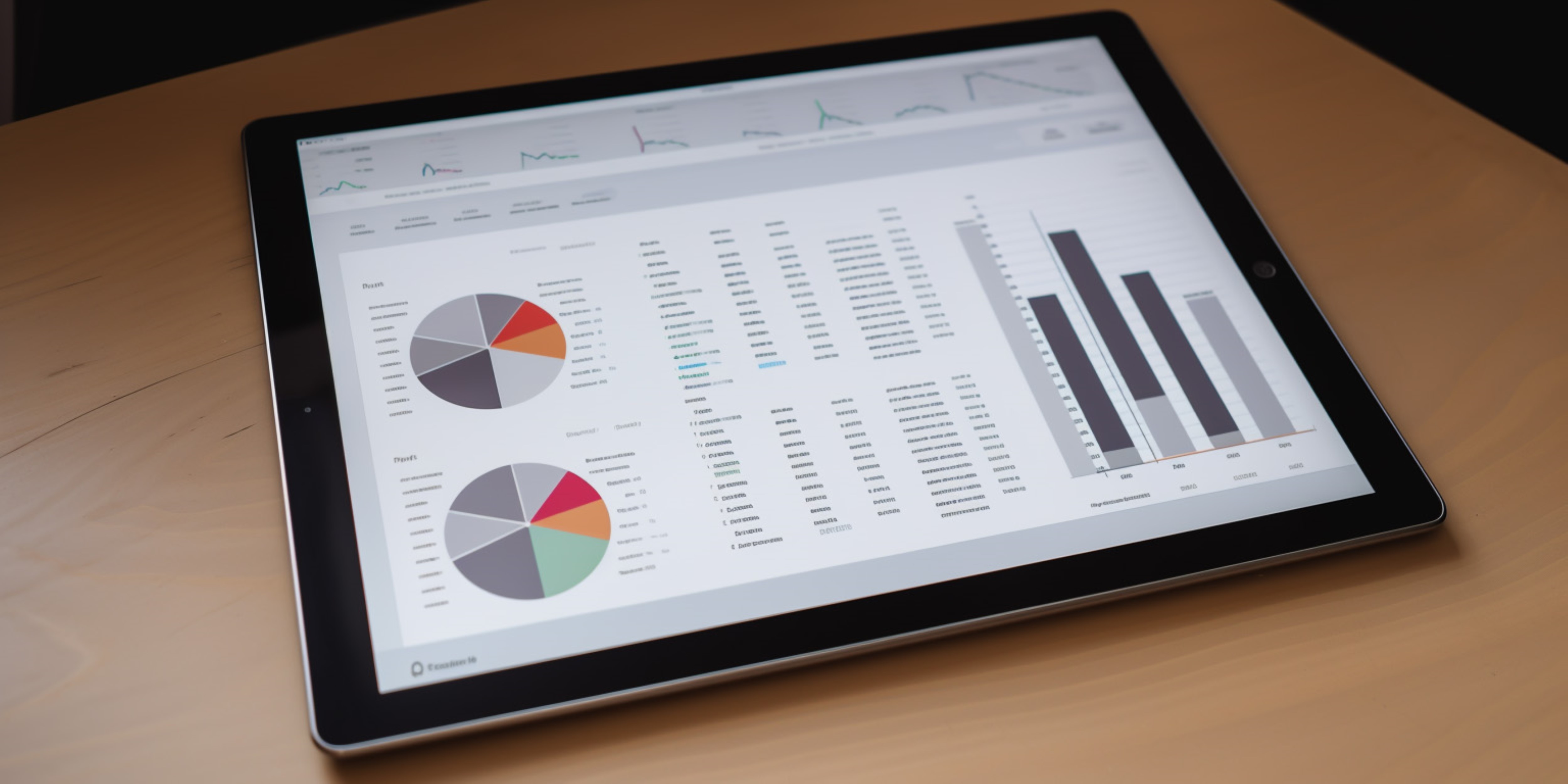OKR vs KPI: understanding the key differences and how to use them together


Book a free consultation now!
Picture this: you are in a boardroom surrounded by dashboards showing hundreds of metrics. Revenue is up, but churn is rising. Productivity scores look great, but customer satisfaction is declining. With countless strategies and measurement frameworks at your disposal, how do you know which ones actually matter? ROI, NPS, CAC, LTV, EBITDA, conversion rates, engagement scores—the list seems endless.
While businesses chase every metric, the most successful companies have discovered that two frameworks—OKRs and KPIs—can cut through the noise. The challenge lies not in collecting data but in distinguishing between metrics that maintain operational excellence and those that drive transformational growth.
Understanding what are OKRs and KPIs is crucial for modern business success. Many leaders ask: KPI or OKR - which framework should we choose? The truth is that the difference between OKR and KPI lies not in choosing one over the other, but in understanding how these complementary systems can work together. Whether you are exploring KPI vs OKR methodologies or wondering can OKRs and KPIs work together, this comprehensive guide will clarify the difference between KPI and OKR while demonstrating how do OKRs and KPIs work together to create organizational success.
In this guide, we will define these two often confused terms, compare their key differences, provide you with real-world examples and show you step-by-step how to implement them.
OKRs
OKR (Objectives and Key Results) is a goal-setting framework that combines ambitious, qualitative objectives with specific, measurable key results that indicate progress toward those objectives.
Key characteristics of OKRs:
1. Ambitious and aspirational
- Objectives are meant to be challenging, pushing teams beyond business-as-usual.
- Stretch goals are encouraged—even 70% completion can be seen as a success if the goal was bold.
2. Measurable and quantifiable
- Key Results are specific, numeric, and time-bound.
- They answer the question: How will we know we have achieved the objective?
3. Transparent and public
- OKRs are usually visible to everyone in an organization.
- Transparency helps align teams and ensures everyone is working toward shared priorities.
4. Time-bound and cyclical
- OKRs operate on defined cycles, typically quarterly or annual periods.
- Clear deadlines create urgency and enable regular evaluation of progress against targets.
5. Flexible and adaptive
- OKRs are regularly reviewed and can be updated based on changing business conditions.
- Teams can pivot or adjust key results mid-cycle if priorities shift or new opportunities emerge.
OKRs examples
Many companies' OKRs are proprietary and not publicly disclosed. Based on available data, announcements and strategic documents, we have prepared several probable examples from world-renowned brands.
Spotify
Spotify is among the companies that has publicly acknowledged extensive use of OKRs in their organizational framework.
Potential Objective: Become the world's favorite audio platform
Potential Key Results:
- Increase average time spent on the platform by users by 15% in the next quarter
- Increase monthly subscribers by 15% in the next quarter
- Launch Spotify in 15 new markets in the next quarter
LinkedIn's former CEO, Jeff Weiner, credits the platform's success to the implementation of the OKR framework.
Potential Objective: Establish LinkedIn as the definitive professional network
Potential Key Results:
- Grow monthly active users by 25%
- Increase premium subscriptions by 40%
- Facilitate 100 million job applications through the platform
Adobe
Adobe implemented OKRs to replace the outdated software licensing models. Their system is called "Goals and Expectations" with a "Check-in" program.
Potential Objective: Transform from software licensing to a subscription model
Potential Key Results:
- Achieve 90% of revenue from subscription services
- Reduce customer subscription churn to below 5%
- Onboard 5 million new Creative Cloud subscribers
What are KPIs
KPI (Key Performance Indicator) is a measurable value that shows how effectively a company is achieving its main business objectives.
Key characteristics of KPIs:
1. Operational and performance-focused
- KPIs are designed to monitor current business health and day-to-day operations.
- They track performance against established benchmarks rather than pushing for breakthrough achievements.
2. Quantitative and standardized
- KPIs use specific metrics with clear numerical values and units of measurement.
- They answer the question: How well are we performing against our targets?
3. Role-based and departmental
- KPIs are typically specific to functions, teams, or individual roles within an organization.
- Different departments track different KPIs relevant to their operational responsibilities.
4. Continuous and ongoing
- KPIs operate on regular reporting cycles - daily, weekly, monthly, or quarterly.
- Consistent monitoring enables real-time decision-making and immediate course corrections.
5. Stable and consistent
- KPIs remain relatively unchanged over time to enable trend analysis and benchmarking.
- They provide consistent measurement standards that allow for historical comparison and pattern recognition.
KPI and OKR real-world examples
Below you will find a list of brands with potential KPIs, each representing company's strategic priorities and operational excellence in their respective industries.
Amazon
- Prime membership growth: 200+ million global Prime subscribers
- Fulfillment speed: 65% of orders delivered within 24 hours
- Customer satisfaction: Net Promoter Score (NPS) of 69
Apple
- iPhone market share: 57% of US smartphone market
- App Store revenue: $24 billion quarterly revenue
- Customer loyalty rate: 92% iPhone user retention
McDonald's
- Global restaurant count: 40,500 locations worldwide
- Drive-thru efficiency: Average 3.5-minute service time
- Digital sales penetration: 25% of sales through mobile app and delivery
Tesla
- Vehicle delivery growth: 40% year-over-year delivery increase
- Production efficiency: 95% factory utilization rate
- Supercharger network expansion: 4,678 global charging stations
Google (Alphabet)
- Search market share: 92.5% global search engine market dominance
- YouTube watch time: 2 billion monthly logged-in users
- Ad revenue per search: $61.24 average revenue per 1,000 searches
KPI vs OKR: the fundamental differences explained
Now that you have learned the definitions, characteristics and examples, it is time to compare them. OKRs are aspirational goal-setting frameworks that define what you want to achieve (Objectives) and how you'll measure progress toward those ambitious goals (Key Results), while KPIs are operational metrics that continuously monitor current business performance against established benchmarks.
In essence, OKRs drive strategic change and growth, whereas KPIs track ongoing operational health and efficiency. For a detailed side-by-side comparison of their key differences, take a look at the table below which compares OKRs and KPIs across various dimensions.
Understanding the difference between OKR and KPI through these comparisons helps clarify why the question isn't KPI or OKR, but rather how to leverage both frameworks effectively. OKRs and KPIs serve different but complementary purposes in organizational performance management.
How do OKRs and KPIs work together
OKRs and KPIs work exceptionally well together, forming a comprehensive performance management ecosystem that addresses both strategic advancement and operational excellence. This integrated approach creates a powerful synergy where each framework reinforces and enhances the other's effectiveness.
KPIs provide the essential baseline data and historical context that inform intelligent OKR target-setting, ensuring that ambitious objectives are grounded in reality while still maintaining their aspirational nature. When organizations track their operational metrics consistently, they develop a clear understanding of current performance levels, seasonal patterns, and achievable improvement rates, which enables more strategic and data-driven OKR formulation.
The complementary relationship becomes particularly evident in practice across various business functions. Marketing teams might monitor cost-per-acquisition and conversion rates as ongoing KPIs while simultaneously pursuing an OKR to transform their digital marketing approach, with key results targeting significant improvements in these same metrics.
Sales organizations often track monthly recurring revenue and pipeline velocity as standard KPIs, then leverage this operational intelligence to set breakthrough OKRs focused on market expansion or customer segment penetration. Product development teams frequently use user engagement and feature adoption rates as continuous KPIs, while concurrently working toward OKRs that aim to revolutionize user experience or capture new market opportunities.
This dual-framework approach also addresses the inherent limitations of using either system in isolation. While KPIs excel at maintaining performance standards and identifying operational issues, they lack the inspirational and transformational qualities necessary for driving innovation and breakthrough achievements.
Conversely, OKRs provide the strategic direction and ambitious targeting required for significant growth, but without KPI-based operational monitoring, organizations risk losing sight of fundamental business health indicators. When implemented together, KPIs serve as the navigational instruments that keep organizations on course, while OKRs function as the compass pointing toward transformational destinations, creating a balanced performance management approach that sustains both immediate effectiveness and long-term competitive advantage.
Implementing Both Systems
Successfully implementing both OKRs and KPIs requires a strategic, phased approach that considers organizational readiness and existing measurement capabilities. Organizations should begin by conducting a comprehensive audit of their current metrics and goal-setting practices, identifying which existing measurements can serve as foundational KPIs and which strategic areas require OKR-driven transformation. The most effective implementations start with leadership alignment on core objectives, followed by the establishment of baseline KPIs that provide operational stability while ambitious OKRs drive breakthrough initiatives.
The integration process typically unfolds across three phases: foundation building, where essential KPIs are standardized; strategic overlay, where OKRs are introduced to complement existing operational metrics; and optimization, where both frameworks are refined. During this process, organizations must invest in robust measurement infrastructure, employee training and change management practices.
Best Practices
Organizations that follow these implementation guidelines and integration strategies achieve faster goal attainment and report significantly improved strategic clarity across all organizational levels.
For OKRs
- Begin with company-level objectives
- Cascade down to departments and teams
- Limit to 3–5 objectives per level
- Schedule regular check-ins and reviews
For KPIs
- Choose metrics that directly impact business outcomes
- Ensure data accuracy and accessibility
- Set realistic targets based on historical performance
- Create dashboards for real-time visibility
Integration Strategies
- Map KPIs to relevant OKR Key Results
- Use KPI trends to inform OKR progress
- Adjust KPI targets based on OKR ambitions
- Create unified reporting and review processes
Common Pitfalls
While many organizations recognize the strategic value of KPIs and OKRs for performance measurement, they often struggle with implementation and fall into predictable traps that undermine their success.
OKR Mistakes
- Setting too many objectives
- Making objectives too vague or unmeasurable
- Treating OKRs like traditional performance reviews
- Not updating or reviewing regularly
KPI Errors
- Tracking vanity metrics instead of actionable data
- Having too many KPIs without clear priorities
- Not connecting KPIs to business outcomes
- Focusing on lagging indicators only
Integration Challenges
- Conflicting priorities between OKR and KPI targets
- Over-complicating the measurement system
- Lack of clear ownership and accountability
- Poor communication across teams
The question of OKR vs KPI misses the bigger picture - successful organizations do not choose between these frameworks but instead master the art of using OKRs and KPIs together. Understanding what are OKRs and KPIs and their respective strengths allows companies to build comprehensive measurement systems that drive both operational excellence and strategic breakthrough. When implemented correctly, KPI and OKR examples demonstrate that these frameworks create a powerful synergy that addresses the full spectrum of organizational performance needs.
Measure OKRs and KPIs with RST
Modern organizations struggling to effectively monitor KPIs and OKRs often face fragmented measurement systems, manual data collection processes and disconnected reporting tools
RST Software can build tailored performance management platforms that integrate seamlessly with existing business systems, creating unified dashboards that display both operational KPIs and strategic OKR progress in real-time. These custom solutions can be designed to match your specific workflows, industry requirements and reporting preferences, ensuring maximum adoption and effectiveness across all user levels.
Our team can implement predictive analytics capabilities that not only track current performance but also forecast trends, identify potential issues and suggest optimization opportunities. Interactive visualizations, customizable reports and intelligent alerting systems help organizations quickly understand performance patterns and make data-driven decisions.
RST ensures that performance management platforms can grow with the organization, handling increased data volumes, additional users and evolving measurement requirements without compromising performance or security. We implement robust access controls, data encryption and compliance features that protect sensitive business information.
By partnering with RST, your company can gain access to specialized expertise, cutting-edge technology and ongoing support that transforms OKR and KPI management from a manual, fragmented process into a strategic advantage that drives measurable business results. Contact us today to discover how we can build a custom performance management platform that delivers the insights and competitive edge your organization needs.


